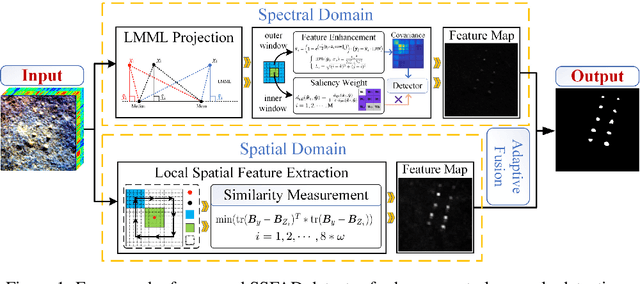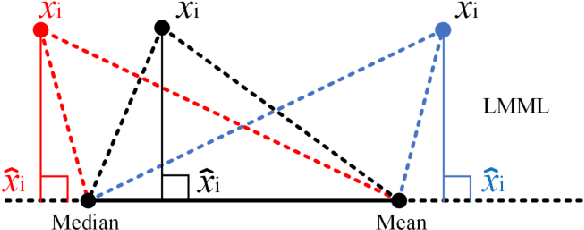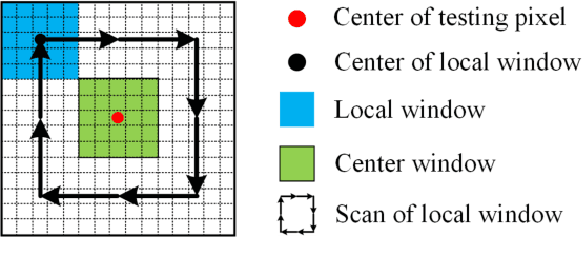Zengfu Hou
A spectral-spatial fusion anomaly detection method for hyperspectral imagery
Feb 24, 2022



Abstract:In hyperspectral, high-quality spectral signals convey subtle spectral differences to distinguish similar materials, thereby providing unique advantage for anomaly detection. Hence fine spectra of anomalous pixels can be effectively screened out from heterogeneous background pixels. Since the same materials have similar characteristics in spatial and spectral dimension, detection performance can be significantly enhanced by jointing spatial and spectral information. In this paper, a spectralspatial fusion anomaly detection (SSFAD) method is proposed for hyperspectral imagery. First, original spectral signals are mapped to a local linear background space composed of median and mean with high confidence, where saliency weight and feature enhancement strategies are implemented to obtain an initial detection map in spectral domain. Futhermore, to make full use of similarity information of local background around testing pixel, a new detector is designed to extract the local similarity spatial features of patch images in spatial domain. Finally, anomalies are detected by adaptively combining the spectral and spatial detection maps. The experimental results demonstrate that our proposed method has superior detection performance than traditional methods.
A Joint Morphological Profiles and Patch Tensor Change Detection for Hyperspectral Imagery
Jan 20, 2022Abstract:Multi-temporal hyperspectral images can be used to detect changed information, which has gradually attracted researchers' attention. However, traditional change detection algorithms have not deeply explored the relevance of spatial and spectral changed features, which leads to low detection accuracy. To better excavate both spectral and spatial information of changed features, a joint morphology and patch-tensor change detection (JMPT) method is proposed. Initially, a patch-based tensor strategy is adopted to exploit similar property of spatial structure, where the non-overlapping local patch image is reshaped into a new tensor cube, and then three-order Tucker decompositon and image reconstruction strategies are adopted to obtain more robust multi-temporal hyperspectral datasets. Meanwhile, multiple morphological profiles including max-tree and min-tree are applied to extract different attributes of multi-temporal images. Finally, these results are fused to general a final change detection map. Experiments conducted on two real hyperspectral datasets demonstrate that the proposed detector achieves better detection performance.
 Add to Chrome
Add to Chrome Add to Firefox
Add to Firefox Add to Edge
Add to Edge